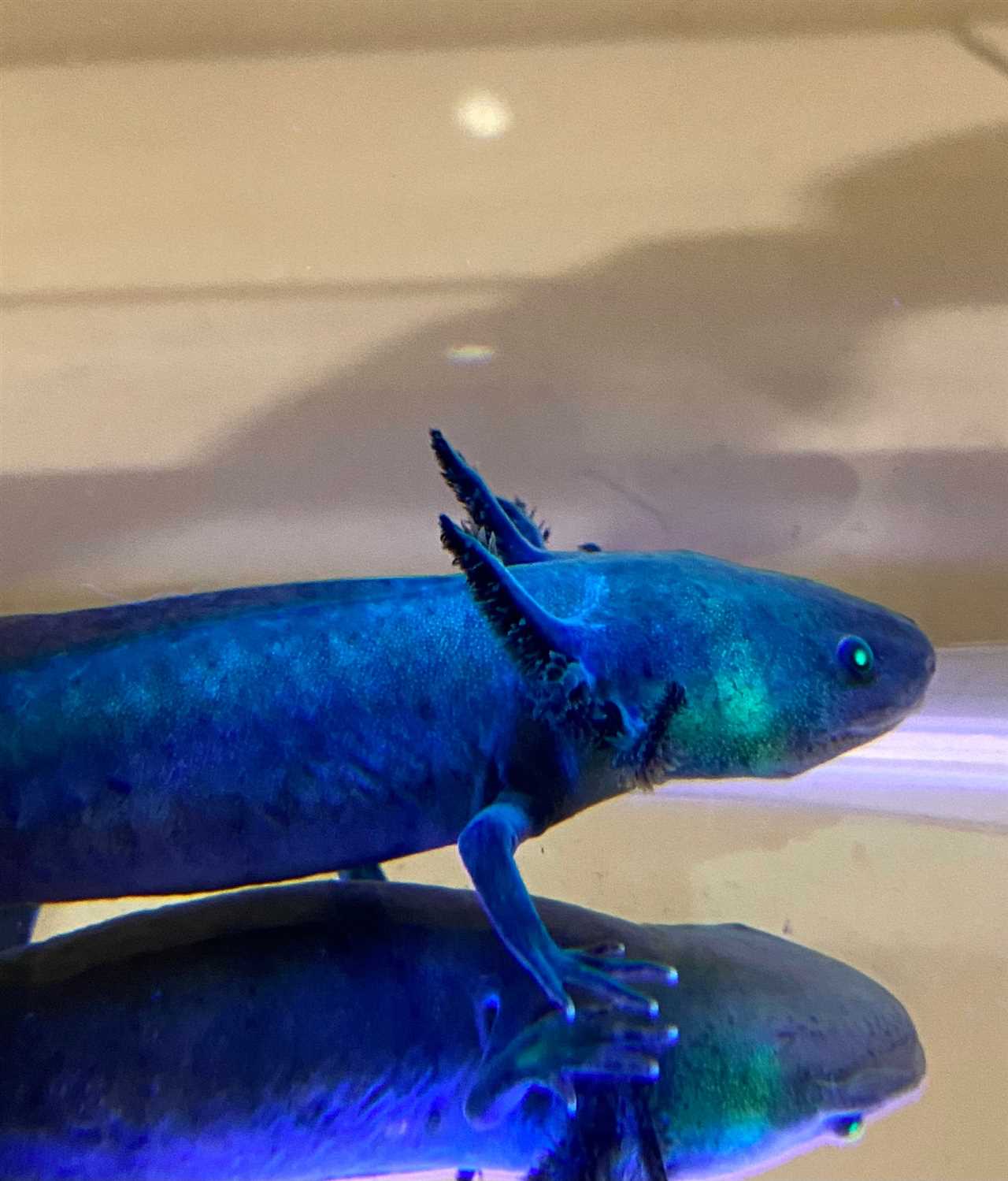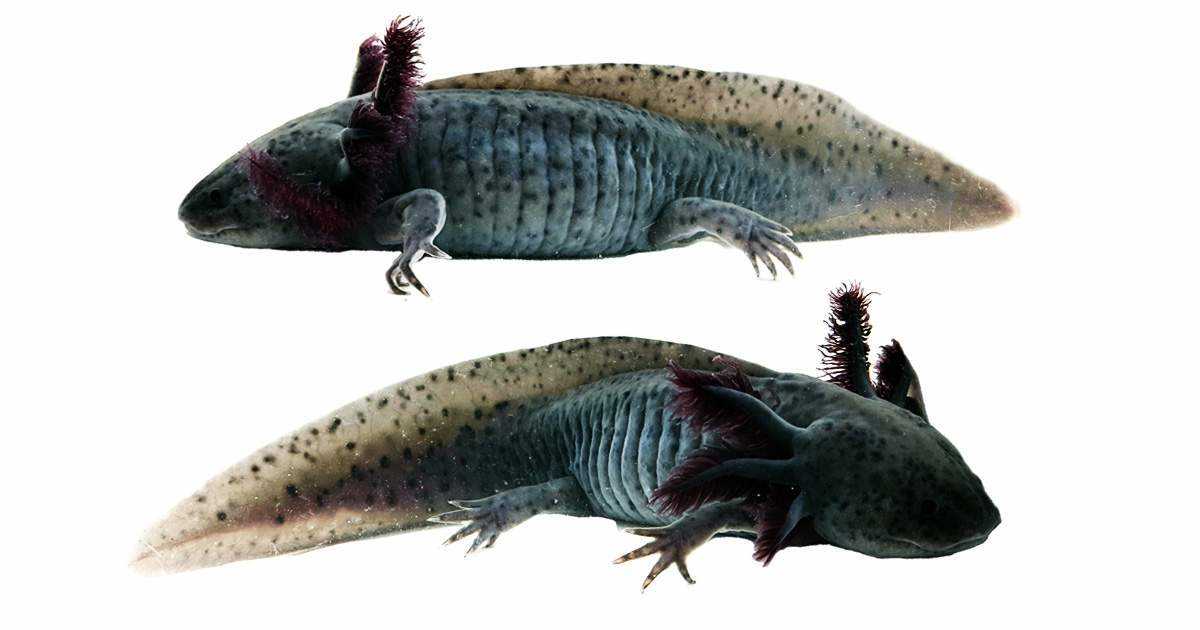The melanoid axolotl is a fascinating species of amphibian native to Mexico. Known for its unique morphology and remarkable regenerative abilities, the axolotl is often referred to as a “walking fish” or “Mexican walking fish.” Despite its common name, the axolotl is not a fish but an aquatic salamander.
One of the most remarkable features of the melanoid axolotl is its ability to regenerate almost any part of its body, including limbs, organs, and even parts of its spinal cord. This extraordinary regenerative capacity has made the axolotl the subject of numerous scientific studies, as researchers hope to uncover the secrets behind its regrowth abilities.
Unfortunately, the melanoid axolotl is currently listed as critically endangered. Its natural habitat, including lakes and canals in Mexico City, has been severely impacted by urbanization and pollution. Conservation efforts are underway to protect and restore the axolotl’s habitat and ensure the survival of this unique species.
Melanoid Axolotl: Characteristics, Care Guide, and Fun Facts
Characteristics
The Melanoid Axolotl is an amphibian with a distinct appearance. It has a long, slender body and can grow up to 12-14 inches in length. One of its most prominent features is its external gills, which are used for breathing underwater. Unlike other amphibians, the Melanoid Axolotl remains in its aquatic form throughout its life, never going through a complete metamorphosis.
One of the most remarkable characteristics of the Melanoid Axolotl is its ability to regenerate various body parts. It can regrow its limbs, spinal cord, heart, and even parts of its brain. This incredible regenerative ability has made it a subject of extensive scientific research and has earned it the nickname “the regeneration king.”
Care Guide
Keeping a Melanoid Axolotl in captivity requires specific care to ensure its well-being. It should be housed in an adequately sized aquarium with clean, chlorine-free water. The temperature of the water should be maintained around 60-68°F (15-20°C), as higher temperatures can be stressful for the axolotl.
Maintaining good water quality is crucial for the axolotl’s health. Regular water changes, filtration, and monitoring of the ammonia and nitrate levels are necessary to prevent any potential health issues.
Fun Facts
– Melanoid Axolotls are entirely aquatic and never develop lungs. They rely on their gills for respiration.
– They have the ability to change their coloration, with darker colors being more common in individuals living in darker environments.
– Melanoid Axolotls are not only popular as pets but also serve as important research models in various scientific fields.
What is a Melanoid Axolotl?
The melanoid axolotl is an aquatic amphibian that originates from Mexico. It is known for its unique characteristics and is considered a special morphological form of the axolotl. The melanoid axolotl is a variant that has a high concentration of melanin in its skin, giving it a dark appearance.
One of the distinguishing features of the melanoid axolotl is its external gills, which differentiate it from other amphibians. These gills allow the axolotl to breathe underwater, making it perfectly adapted for its aquatic lifestyle. It spends its entire life in the water and does not undergo metamorphosis like other amphibians.
Characteristics of Melanoid Axolotl
One of the most distinctive features of the melanoid axolotl is its morphology. It has a long, slender body with four short limbs and a wide tail. Its skin is smooth and slimy, allowing it to move easily through the water. The melanoid axolotl is fully aquatic and spends its entire life in water.
The melanoid axolotl is often kept as a pet due to its interesting appearance and low maintenance requirements. It can be housed in a large aquarium with clean, filtered water. The water temperature should be kept between 16-18°C, and the pH level should be around 7. Axolotls are carnivorous and feed on small insects, worms, and other aquatic creatures. They should be fed a diet of high-quality pellets and live or frozen food.
Tips for Care and Maintenance of Melanoid Axolotls
Melanoid axolotls are a unique amphibian species known for their fascinating characteristics and ability to regenerate body parts. Native to Mexico and often referred to as “Mexican walking fish,” melanoid axolotls have become popular pets due to their low maintenance requirements and captivating appearance.
- Maintain appropriate water parameters: Melanoid axolotls prefer cold water temperatures ranging from 14-20°C (57-68°F). Use a reliable thermometer to monitor the water temperature and a water filter to keep the water clean and free from harmful chemicals.
- Feed a balanced diet: Axolotls are carnivorous and primarily feed on small aquatic creatures like worms, insects, and fish. Offer a varied diet consisting of commercially available axolotl pellets, live or frozen bloodworms, brine shrimp, and blackworms. Avoid overfeeding, as it can lead to obesity.
- Maintain good water quality: Regularly test the water for parameters such as pH, ammonia, nitrite, and nitrate levels. Perform partial water changes of 20-30% weekly to prevent the buildup of harmful toxins.
- Provide proper lighting: Axolotls do not require UVB lighting like reptiles, but they benefit from a regular day-night cycle. Use a low-intensity light source that mimics natural daylight to provide them with a sense of day and night.
- Observe their behavior: Regularly observe your melanoid axolotl to ensure they are exhibiting normal behavior. Look for signs of alertness, healthy appetite, and proactive movement. Any significant changes in behavior, appetite, or physical appearance should be addressed promptly.
By following these care and maintenance tips, you can provide a healthy and thriving environment for your melanoid axolotl. Remember to do thorough research and consult with experts or experienced axolotl owners to ensure the best care for this incredible species.
Feeding a Melanoid Axolotl
Feeding a melanoid axolotl is an important aspect of its care and maintenance. These unique amphibians, native to Mexico, have specific dietary requirements that ensure their health and well-being.
Dietary Needs
Melanoid axolotls are primarily carnivorous, and their diet mainly consists of live or frozen food. They require a variety of protein-rich food sources to meet their nutritional needs. Some suitable options include:
- Earthworms
- Brine shrimp
- Daphnia
- Small fish, such as guppies
It is crucial to provide a diverse diet to axolotls to ensure they receive all the necessary nutrients. Feeding them a single type of food may lead to nutritional deficiencies.
Feeding Schedule

Adult melanoid axolotls should be fed once or twice a day, while juveniles may require more frequent feedings. Ensure that the amount of food provided is appropriate for the size of the axolotl, as overfeeding can lead to obesity and other health issues.
Feeder Preparation
Live food should be gut-loaded or fed a nutritious diet before being offered to the axolotls. This ensures that the axolotls receive a balanced and healthy meal. Gut-loading involves feeding the live food with nutrient-rich foods, such as leafy greens or commercial fish food, to enhance its nutritional value.
Monitoring and Adjusting
Maintaining a proper feeding schedule and observing the axolotl’s body condition is crucial in ensuring their health. Regularly monitor their weight and adjust their feeding habits as needed. If an axolotl becomes overweight, reduce the frequency or amount of food given.
It is also important to note that axolotls have the ability to regenerate body parts, including their damaged or lost gills. Providing a well-balanced diet helps support their regenerative abilities and overall health.
Fun Facts about Melanoid Axolotls

The melanoid axolotl is a fascinating amphibian that is known for its unique ability to regenerate body parts. Unlike most animals, the axolotl can regenerate not only its limbs, but also its spinal cord, heart, and even parts of its brain. This remarkable regenerative power has made the axolotl a popular subject of scientific research.
The melanoid axolotl is native to Mexico, where it is found in the ancient lakes of Xochimilco and Chalco. Unfortunately, due to habitat destruction and pollution, the axolotl is now critically endangered in the wild. Efforts are being made to preserve and protect this unique species, both in captivity and in its natural habitat.
In addition to its regenerative abilities and unique gills, the melanoid axolotl also has interesting pigmentation. The melanoid variety is known for its dark, almost black coloration, which is caused by a high concentration of dark pigment cells called melanocytes.
As pets, melanoid axolotls require careful care and maintenance. They need a cool, clean aquatic environment with plenty of hiding spots and soft substrate. Feeding them a balanced diet of live or frozen foods is essential for their health, as well as regular water quality testing and maintenance.

I’m Lena Adams—a product of an unconventional upbringing in the African wilderness. My father, a daring explorer of African wildlife, sparked my fascination with reptiles, a passion that intertwined with the tragic loss of my mother during an expedition, leaving an indelible mark on my life. Driven to understand the creatures that captivated my parents, I embarked on my journey, sharing insights about reptiles, frogs, and lizards on my website. Through my explorations and conservation efforts, I honour my family’s legacy while seeking connections—to the creatures, nature, and the mother whose presence I yearn to understand.
